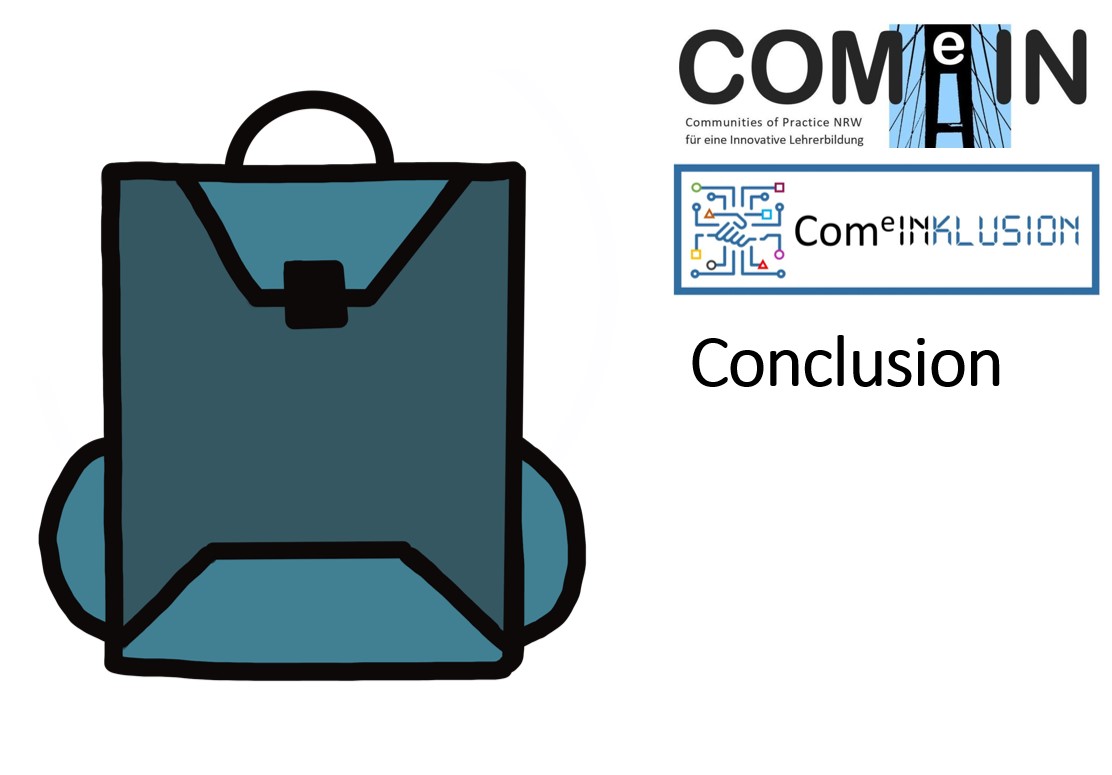Inclusion Meets Digitalization
Section outline
-
-
Before you start to work on this course, we want to provide some information to make navigating through this website a bit easier:
If you want to change the language setting form German (Deutsch (de)) to for example English, chose your preferred language in the drop down menu in the upper right-hand corner of this website.
If you want to open the different H5P units in your browser click on the hyperlink underneath the describtions of the units. You can identify the hyperlink by the hyperlink text "Click here to...".
When you finish a unit you can click on the title of the Course "Digitalisation meets Inclusion" to return to this overview.
For the units Good Practice and Conclusion there are folders called "Materials" that provide diffferent materials (PDF and Word documents). These folders are placed underneath the H5P hyperlinks.
-
-
-
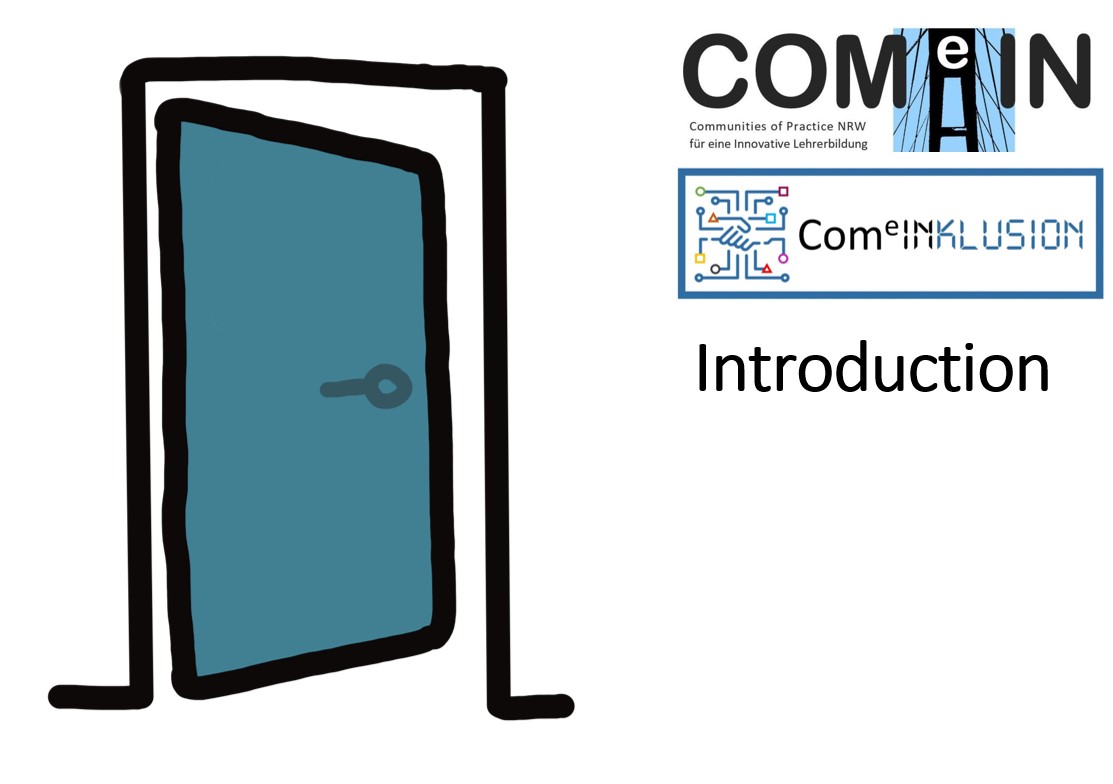
Welcome to the self-study course on the topics of digitality and inclusion.
This introduction is intended to give you a first insight into the structure of the self-study course. On the one hand, you will receive instructions on how to work through the individual units and, on the other hand, an introduction to the accompanying portfolio work, which will provide you with opportunities to reflect on your own practice and experiences at various points. This introduction is therefore more or less an "instruction manual" for the self-study course.
The course is based on the orientation framework NRW (Orientierungsrahmen NRW) for teachers, focusing in particular on the areas:
- using digital opportunities for individual support of learners with different learning requirements inside and outside the classroom.
- teaching: Selecting, modifying, and independently creating digital resources and materials for teaching and learning in an appropriate and goal-oriented manner.
-
-
-
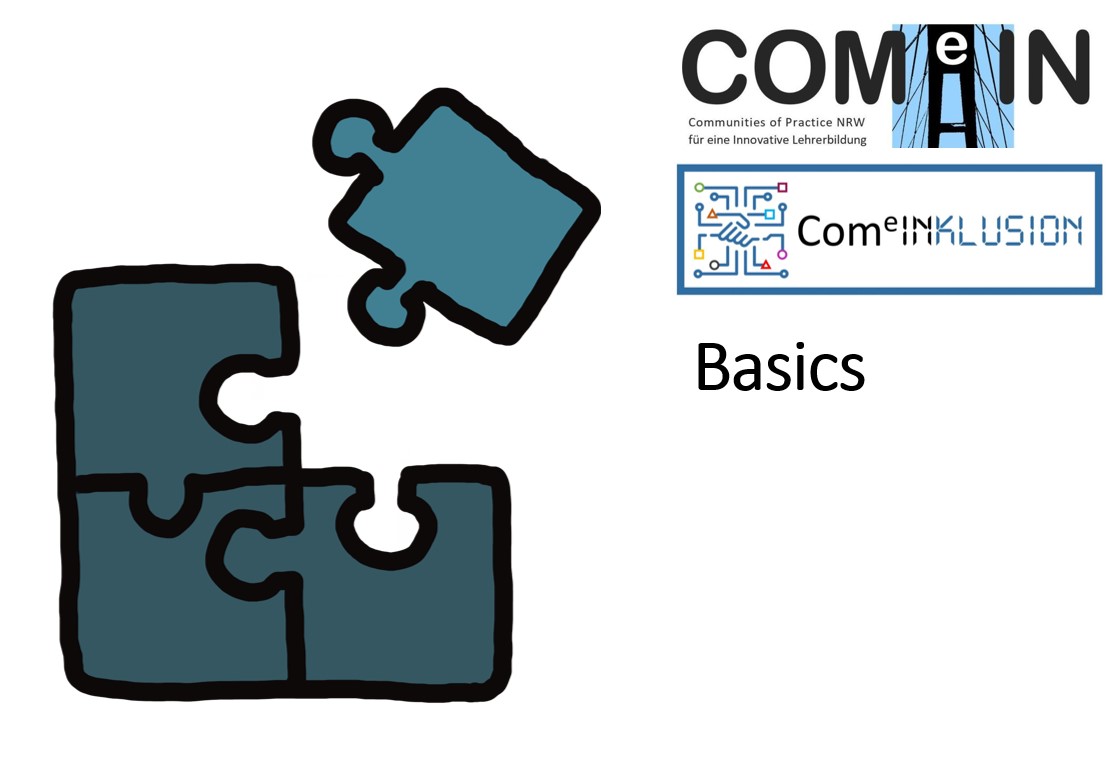
You will learn...
- how to use different terms and their differences, such as digitality and digitalization.
- what significance media have in everyday life and in school.
- what is meant by the term digital divide.
- what aspects of participation in, and through media involve everyone.
-
-
-
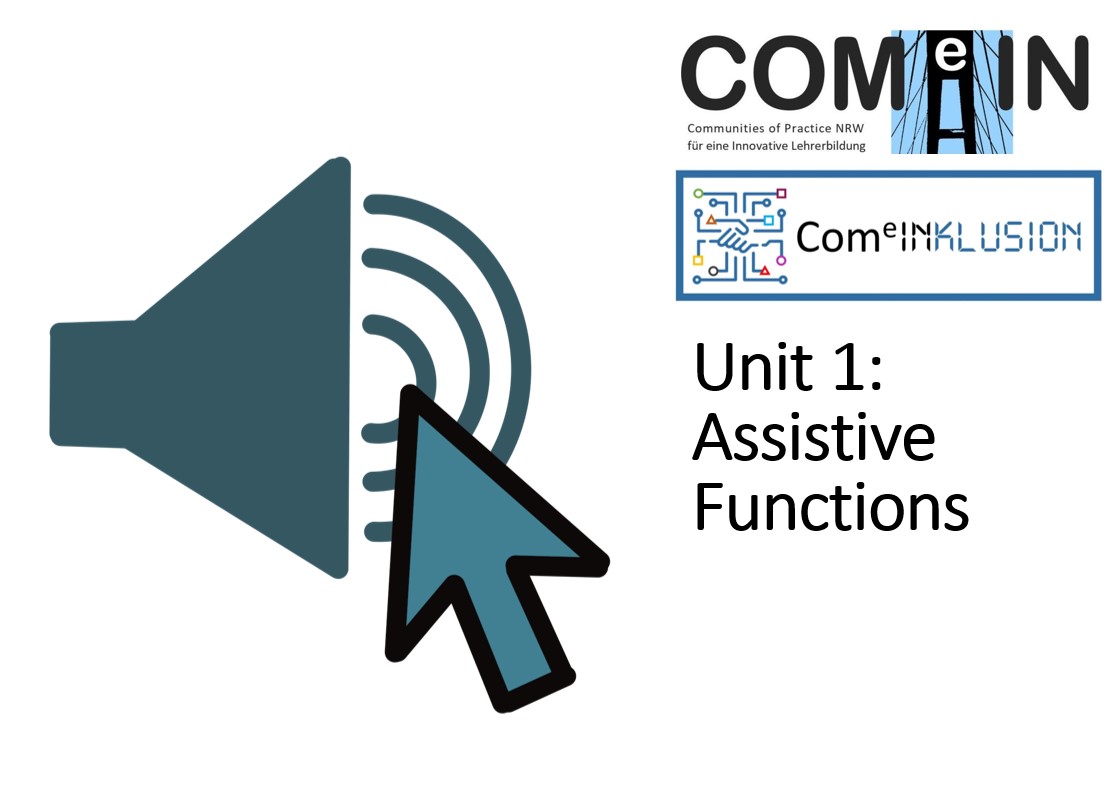
This unit is about how digital media can serve an assistive function for students to compensate for impairment-related functional limitations and thus support equal participation in education. Assistive functions can also be helpful for students without assigned special needs.
You will learn:
- What basic principles of how digital media, platforms, and materials should be designed to be accessible and usable for a diverse student body, especially students with disabilities there are.
- What accessibility means in concrete terms.
- How accessibility features, apps, and assistive technologies enable students with disabilities to participate in education.
-
-
-
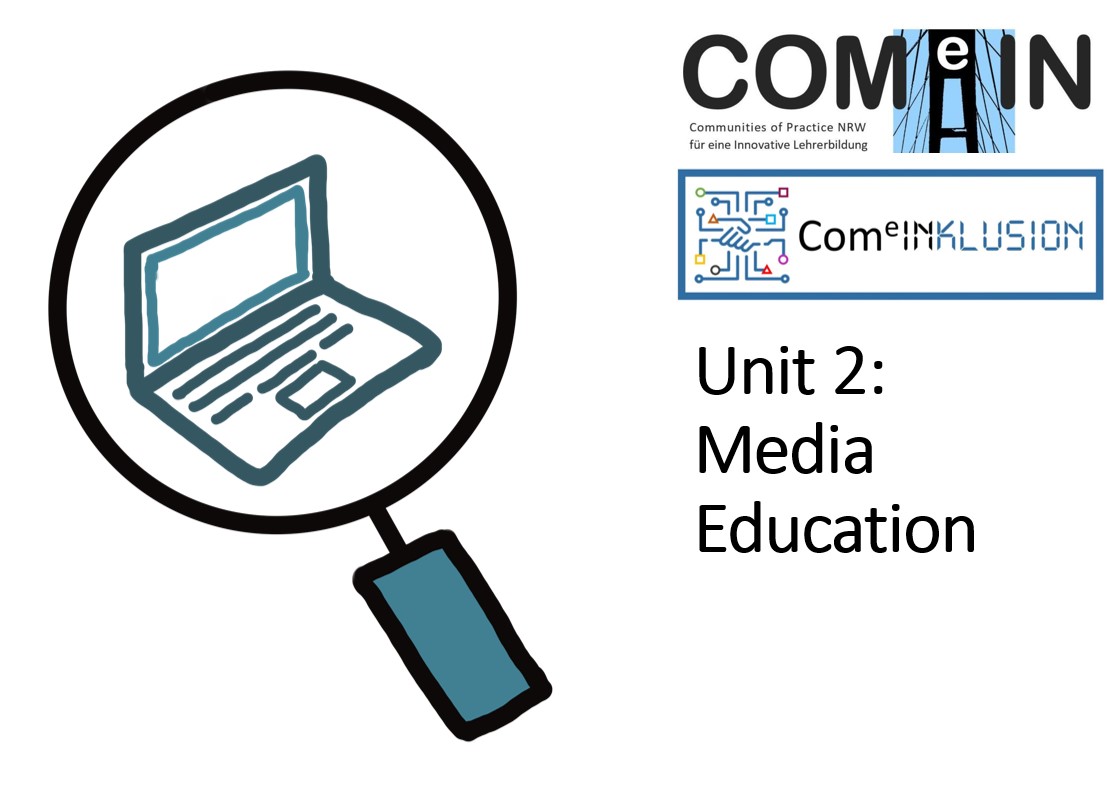
In the Media Education unit, you will explore teaching and learning with and about media.
You will learn...
- to distinguish between basic goals of the use of digital media in the context of media didactics and media education.
- what essential terminology and guidelines for media education for schools there are in North Rhine-Westphalia.
- to develop teaching ideas for your school subjects in which subject-specific and media education goals are pursued.
- what special features and recommendations for media education in inclusive settings there are. You will become acquainted with initial websites and/or tools for inclusive media lessons.
-
-
-
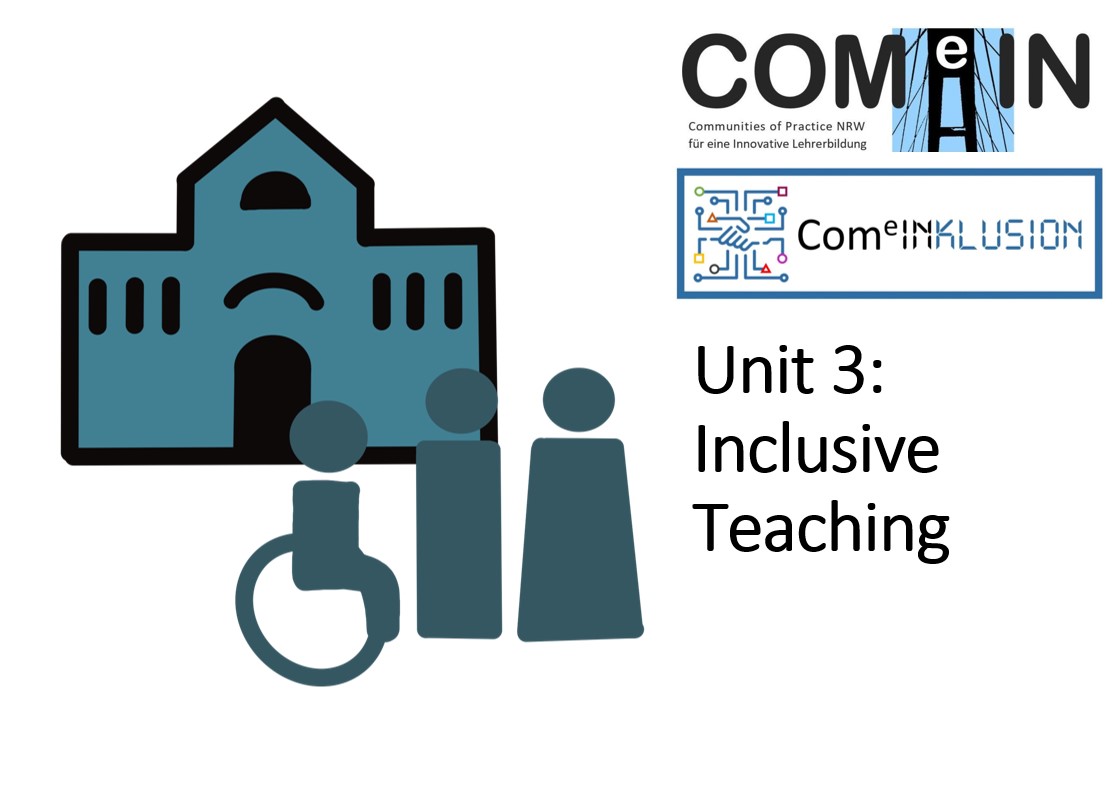
In the unit Inclusive Teaching various inclusive didactic concepts are presented.
You will learn...
- what significance media have in learning.
- on which levels digital media can support inclusive processes in the classroom.
- what significance is attributed to individualization and joint learning in various didactics
- and how media can support the implementation of (inclusive-) didactic concepts and approaches.
-
-
-
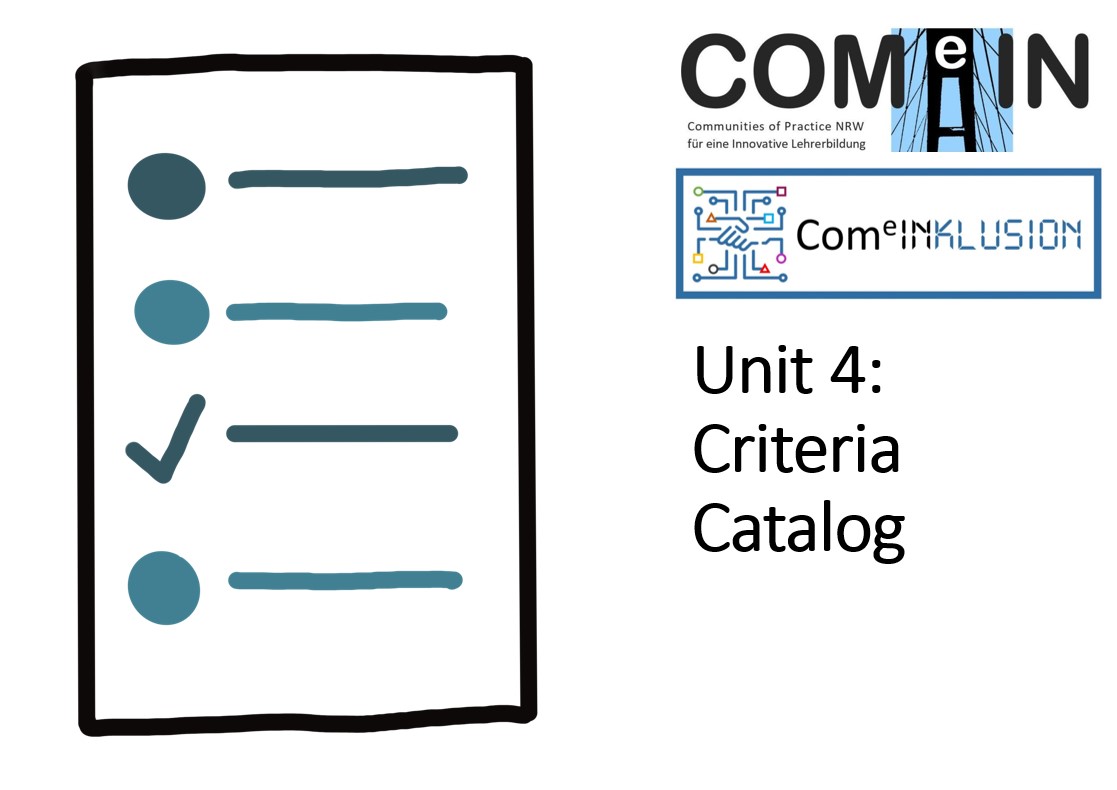
In the unit Criteria Catalog you will learn how to review digital instructional media for its suitability for inclusive learning groups.
You will learn...
- how to support your students in learning effectively with instructional media.
- what barriers exist in instructional media and how you can remove these barriers.
- how to prevent students from experiencing frustration with the materials.
- the importance of instructional media for successful learning.
-
-
-
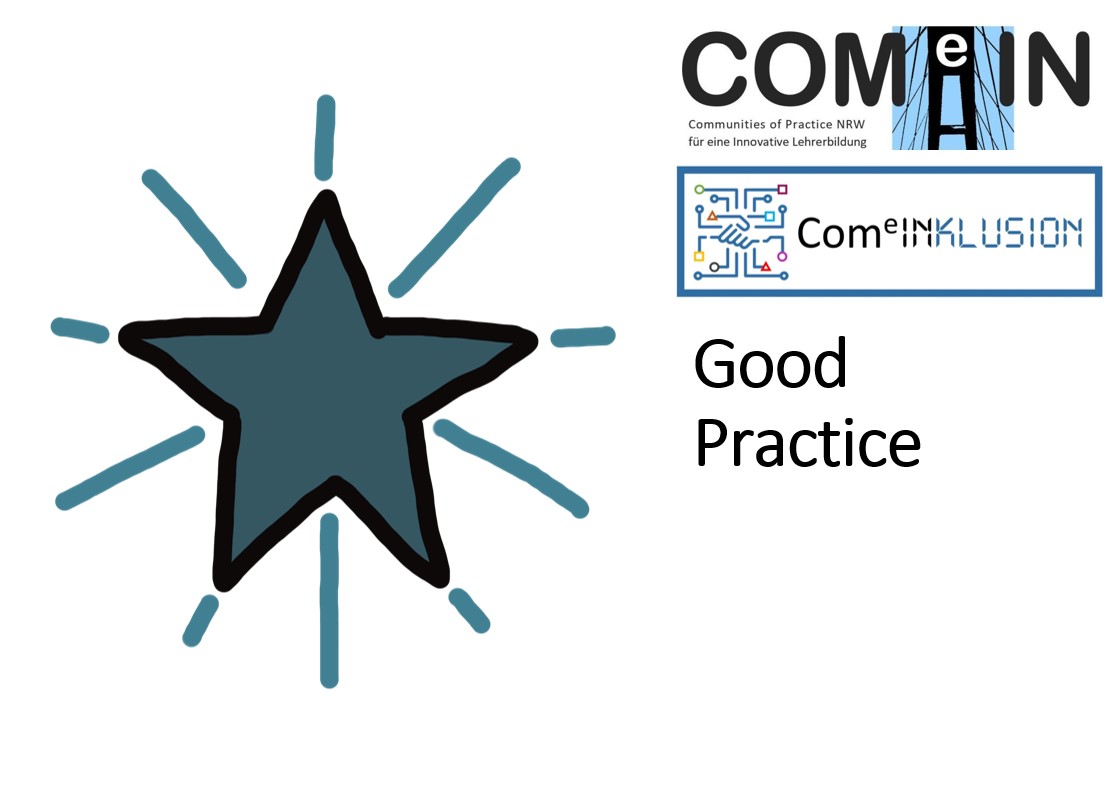
The Good Practice unit shows examples of how digital media can be used in the classroom in an inclusion-sensitive way.
You will learn...
- how to develop your own ideas and considerations based on initial impulses.
- how individual students can be supported through the use of digital media.
- how media can be used as a learning tool for individualization and differentiation.
- learn more about in-depth materials that will support you in your further steps towards a diclusively conceived lesson.
-
